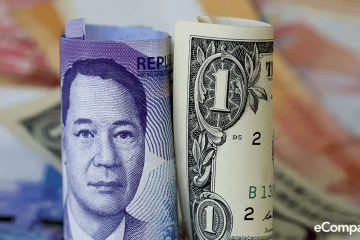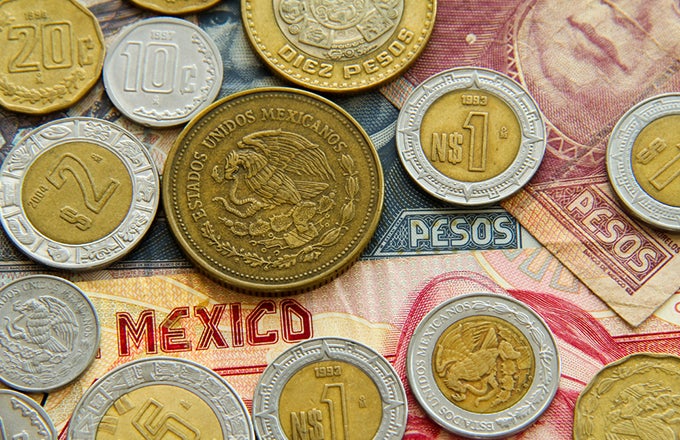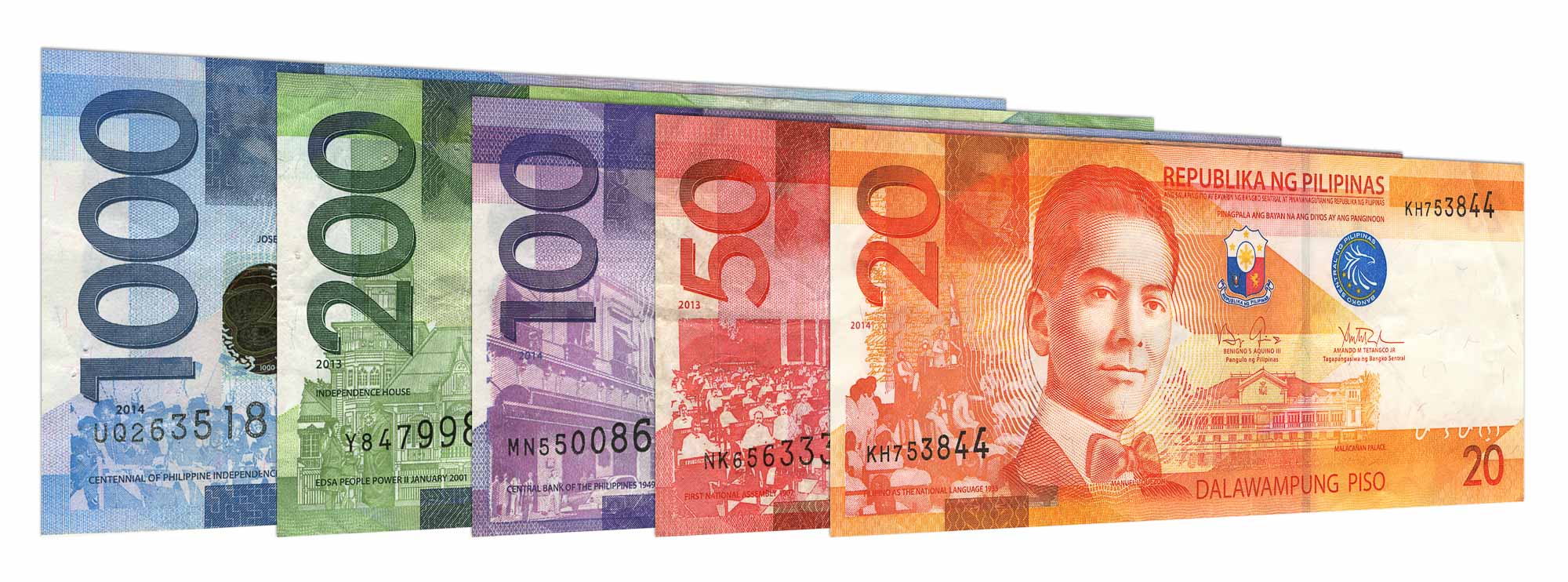

In 1686 Spain minted a coin worth 8 reales provinciales (or only $0.80, known as the peso maria or peso sencillo) which was poorly received by the people. In 1642, it first recognized a new, reduced real provincial worth only $0.10 or 10 reales/$ for use only in Spain (with the old real worth $0.125 now called real nacional and retained in Latin America). While the relationship of 8 reales = $1 (or peso duro) continued in the Americas until the 19th century, Spain grappled with the issuance of reales de vellon (made of billon alloy with less than ½ silver) of various weights and finenesses starting in 1600 due to its domestic financial and monetary problems.
#Dollarto peso full#
The full 0.9028 fineness was restored by Mexico after its independence in 1821. The weight of the United States dollar was defined in 1788 as 371.25 grains of fine silver (or 24.057 g) based on the average silver content of worn peso coins. A sample of coins at the end of the 18th century, however, confirm a fineness of only 0.896 (hence, fine silver 24.25 g) see Currency of Spanish America#Coinage of 1786. The Spanish names at various times and in various places were real de a ocho, patacón, duro, or fuerte.Ī final alteration in 1772 further reduced the fineness of the peso from 11/12 fine to 130/144 = 0.9028 (fine silver 24.443 g). In French, it was called a piastre and in Portuguese, a pataca or patacão. This coin was known to English colonists in North America as a piece of eight, then later on as a Spanish dollar, Spanish milled dollar, and finally as a Mexican dollar. This new peso became even more popular in international trade, with recipients finding it more advantageous to trade it as coined silver of known value rather than melting it into silver bullion.

There was a simultaneous reduction in weight and fineness to 8.5 pesos to a mark (27.064 g), 0.9167 fine or 24.809 g fine silver. Spanish laws of 17 ordered the mechanization of the minting of the peso so that they would be perfectly round and have milled edges. However, some remained in circulation as currency they were ideal candidates for clipping and counterfeiting due to their irregular shape and incomplete design. In most cases these cobs were immediately melted down by the recipient. The Crown was entitled to a fifth of all gold and silver mined, the quinto real (royal fifth), and cobs were a convenient means of handling and accounting for silver. This resulted in a crude, irregular coin called a cob in English and macuquina in Spanish. Initially the peso was produced in Spanish Latin America in a rapid and simplified manner by cutting off a lump of silver of proper weight and fineness from the end of a silver bar, which was then flattened out and impressed by a hammer. It was minted in large quantities after the discovery of silver in Mexico, Peru and Bolivia in the 16th century, and immediately became a coin of worldwide importance in international trade between Europe, Asia and North America. The name peso was given to the 8- real silver coin introduced in 1497, minted at 8 3⁄ 8 pesos to a Castilian mark (230.0465 grams) of silver 134/144 fine (25.56 g fine silver). The peso has lost nearly 80% of its value against the greenback since the beginning of 2020.See also: Spanish dollar and Spanish real On top of that, the Argentine peso has crashed against the dollar, falling 30% this year - making it far more expensive for the country to buy any greenback. It also means it's harder for the country to trade internationally because commodities are generally denominated in the dollar.

The drought meant that Argentina sold fewer crops, sales of which are denominated globally in the US dollar.

More recently, Argentina partly made a $2.7 billion payment to the International Monetary Fund using the yuan, the Buenos Aires Times reported, citing sources from the country's economy ministry on Thursday.Īrgentina turned to the yuan as an alternative currency because its central bank dollar reserves are at their lowest level since 2016 - due in part to an ongoing drought that hit the country's agriculture exports, according to a June 23 Bloomberg report. In April, the country started to pay for imports from China in the yuan.


 0 kommentar(er)
0 kommentar(er)
